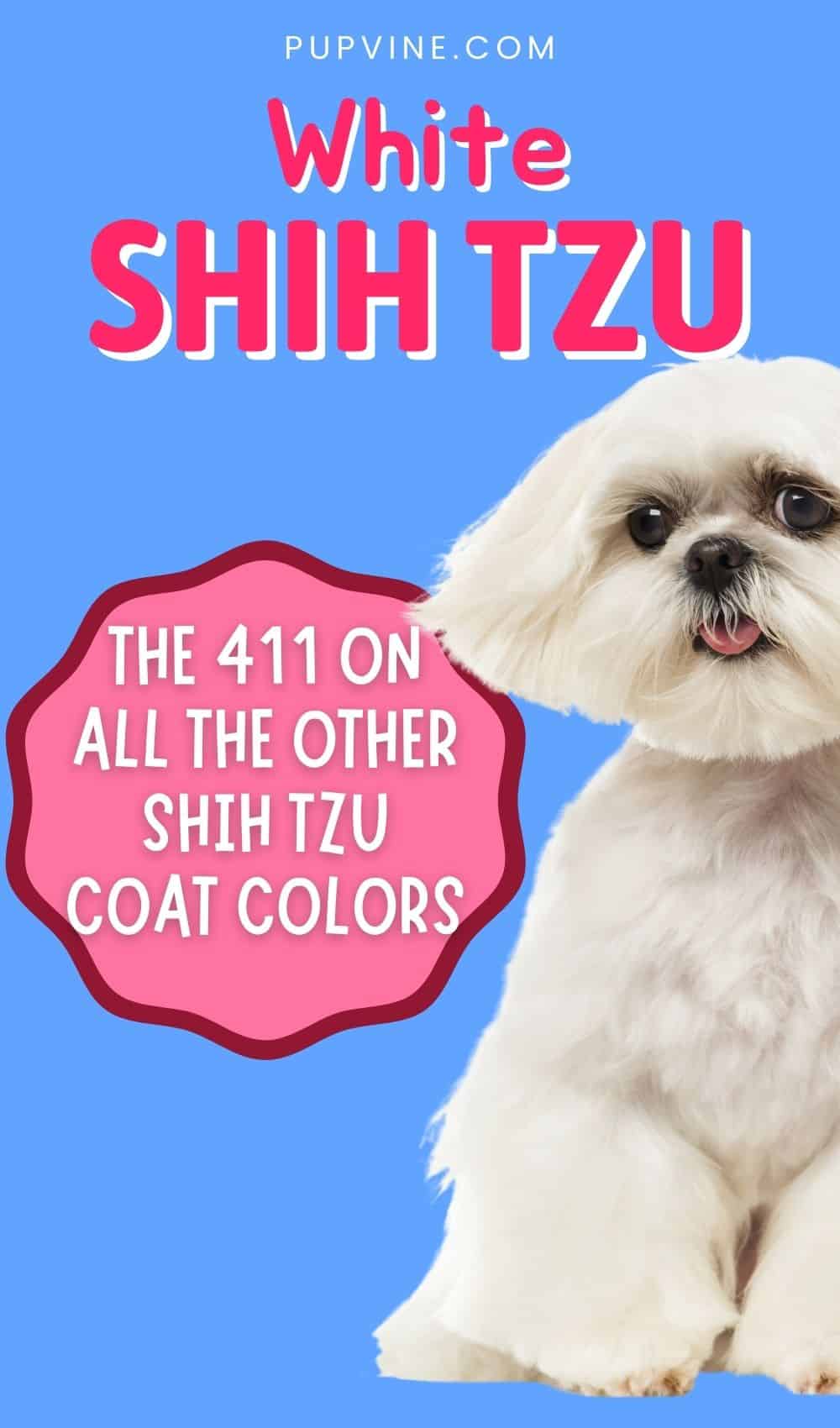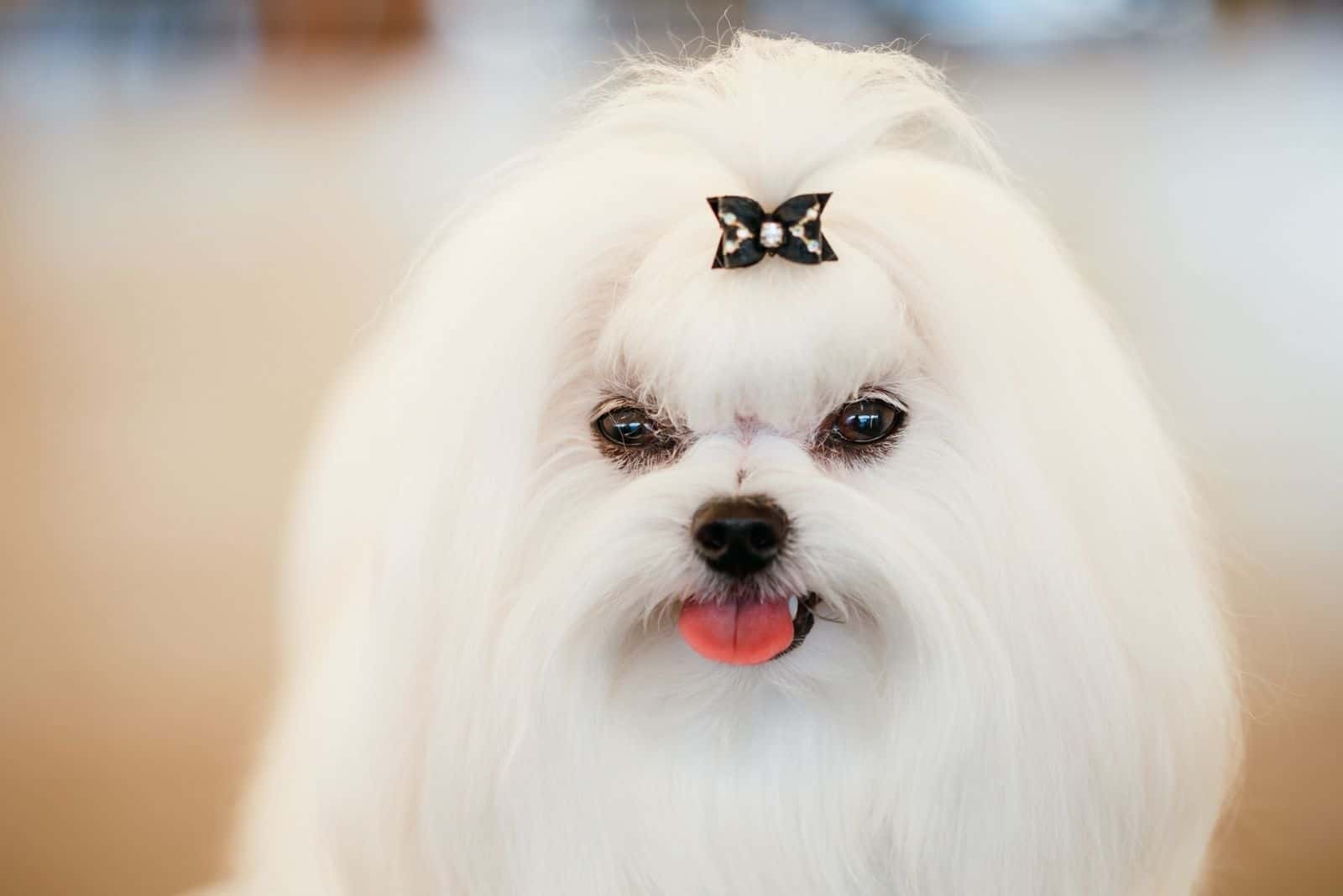With an amazing lifespan of 10 to 16 years, this teddy bear with Tibetan origins is nowadays one of the most popular lap dogs. Meet the Shih Tzu breed; small dogs with huge hearts.
Even though they’re not as popular as Poodles or Retrievers, Shih Tzus still enjoy their time under the sun. The Lhasa Apso, or this “lion dog”, comes in a variety of colors, which makes it difficult for new owners to choose.
Is a white Shih Tzu the right dog for you? Would you care for a black and white Shih Tzu? Maybe, you want to see other colors that these doggies come in. Then, by all means, let’s introduce you to a rainbow of Shih Tzu colors!
The Shih Tzu Coat Color Options
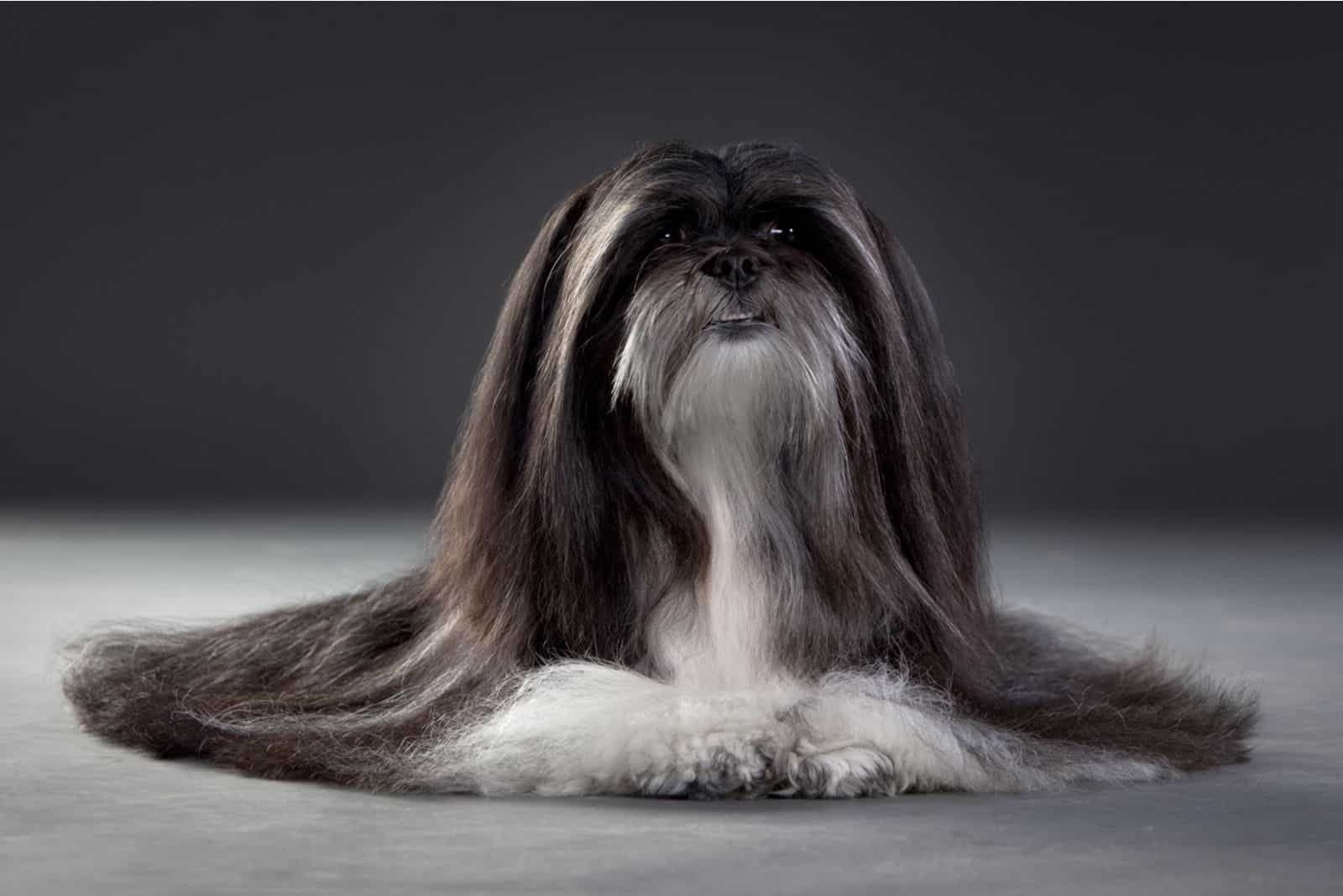
Shih Tzus are recognizable for their long and silky coat, which is always described as gorgeous. Besides being so pretty, Shih Tzus are also hypoallergenic because of their hair-like coat. They’re light shedders, and their dander-loss is low to minimum.
The coat comes in many color variations: black, black and white, gray and white, red and white, etc.
A Shih Tzu with a white tip on the tail and a white blaze on the forehead is highly prized.
Keeping the coat gorgeous and glamorous is quite a demanding task. Daily brushing and combing are necessary in order to prevent mats and tangles. Also, bathing should be done as often as once a week.
Many Shih Tzu owners opt to use a groomer’s services to clip the long locks and keep the dog in perfect shape. This is much simpler to take care of the long-haired Shih Tzu because the short coat requires grooming appointments every six to eight weeks.
If you choose to groom the Shih Tzu all by yourself, you should make the experience as comfortable as possible for both of you. Grooming should start in early puppyhood in order to help the dog get used to the process in the future.
Always brush all the way down to the skin. Groomers usually have Shih Tzus lying on their side while they brush the coat in sections. It’s much easier to brush that way, and it’s pleasant for the dog.
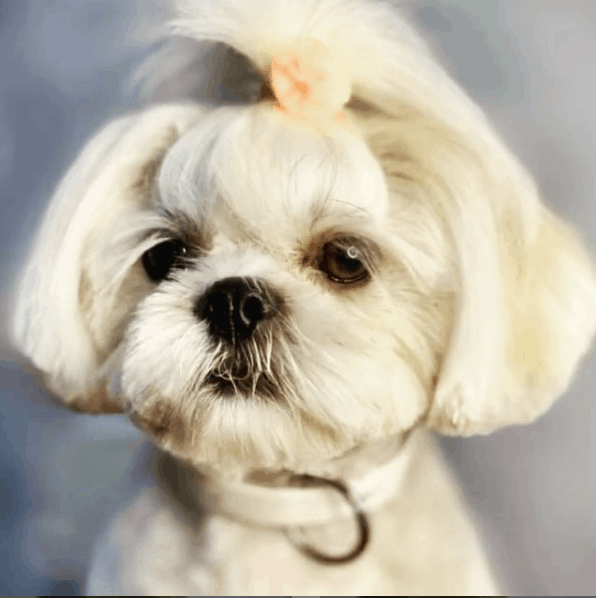
Photo from: @shihtzus_and_peonies
At the tenth-month milestone, the Shih Tzu’s coat changes from puppy fluff to a silky adult coat. At this stage, the coat will mat faster than you can brush it. Once the adult coat grows out, the brushing will be a lot easier.
What’s most fascinating about Shih Tzus is the rainbow of colors. With so many choices, it’s hard to decide which Shih Tzu to get. It goes so far that there are breeders specializing in raising certain Shih Tzu colors.
But, how legit are those colors? Let’s see what the officials say.
“All Shih Tzu Coat Colors are permissible,” states the breed standard by the American Kennel Club.
The Kennel Club in the UK agrees: “All colors are permissible. White blaze on the forehead and white tip to tail are highly desirable in parti-colors.”
The Canadian Kennel Club states: “All colors are acceptable, but black noses, lips, and eye rims are a must.”
Also, according to the FCI (Fédération Cynologique Internationale): “All colors are permissible. A white blaze on the forehead and white tip to tail are highly desirable in parti-colors.”
What Are The Most Common Shih Tzu Colors?
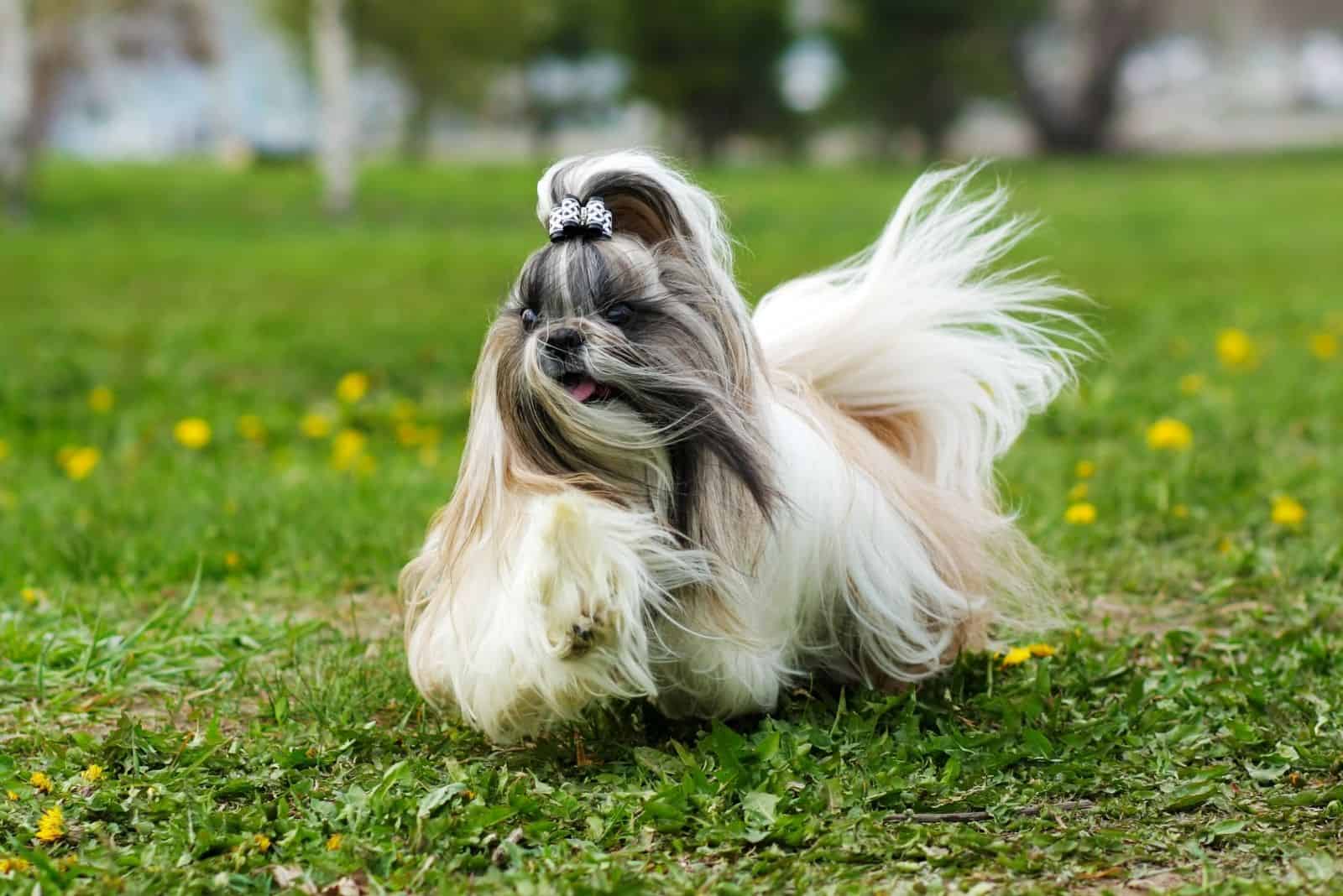
Unlike many other dog breeds that come in a variety of coat colors, the Shih Tzu comes in numerous color variations.
With so many color options, it’s only natural to ask which color combinations and markings are available and recognized.
If a breeder is planning to register a Shih Tzu puppy with the AKC, he has the choice of eight solid colors, seven varieties of two color combinations, four combinations of three or more colors, and a variety of different types of markings.
Shih Tzu colors can be a bit confusing because the colors change over time. However, here’s a list of the most common ShihTzu colors:
• Solid black
• Solid white
• Solid red
• Solid blue
• Silver
• Gold
• Liver
• Brindle
• Double-colored
• Tri-colored
What Are The Unofficial Shih Tzu Colors?
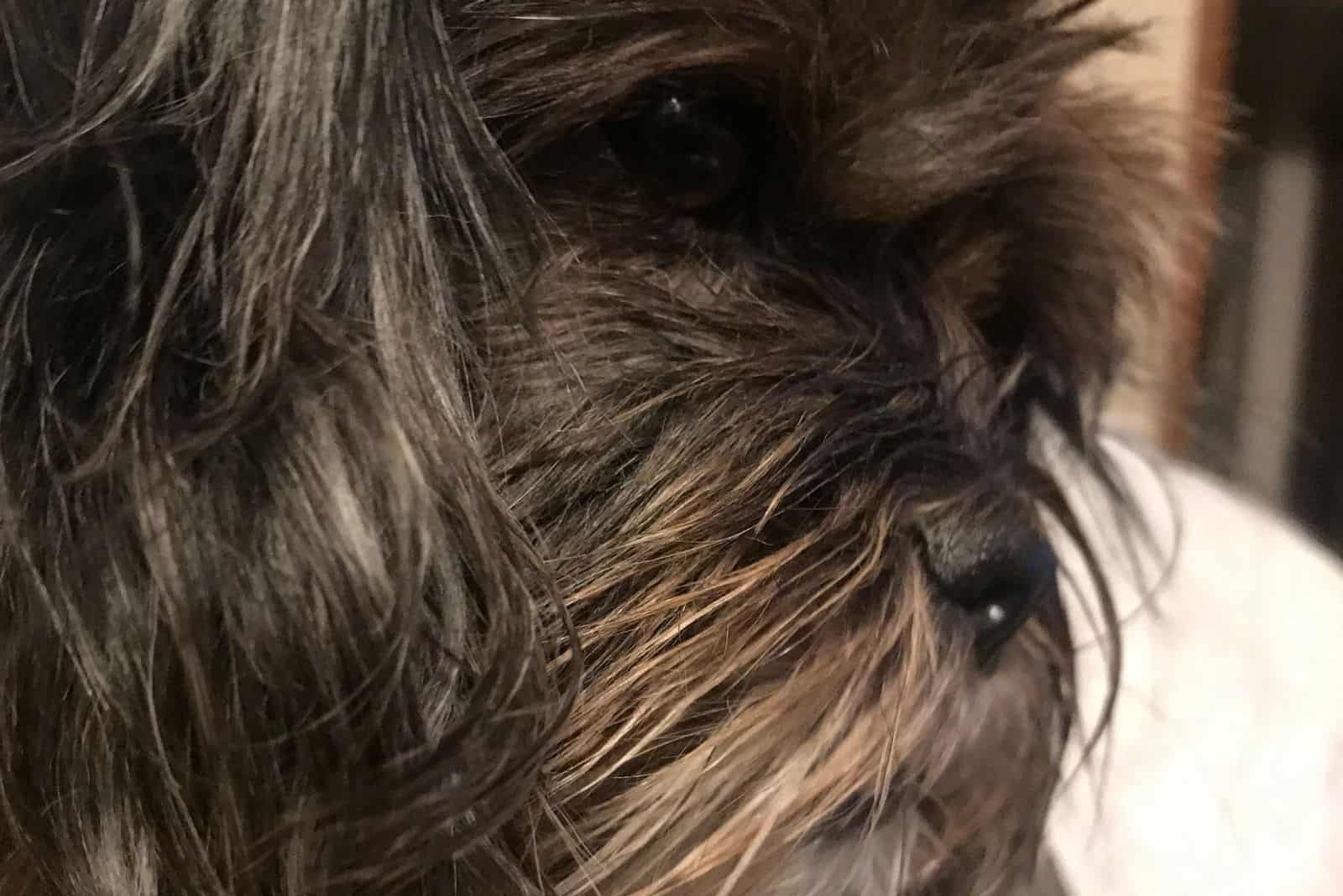
As for the unofficial Shih Tzu colors, they are listed as:
• Chocolate
• Lavender
• Isabella
If you tried listing any of these colors with the AKC, they would be labeled as liver color. Just like many other dog breeds, such colors are a result of breeders trying to make more profit.
Solid Black Shih Tzu
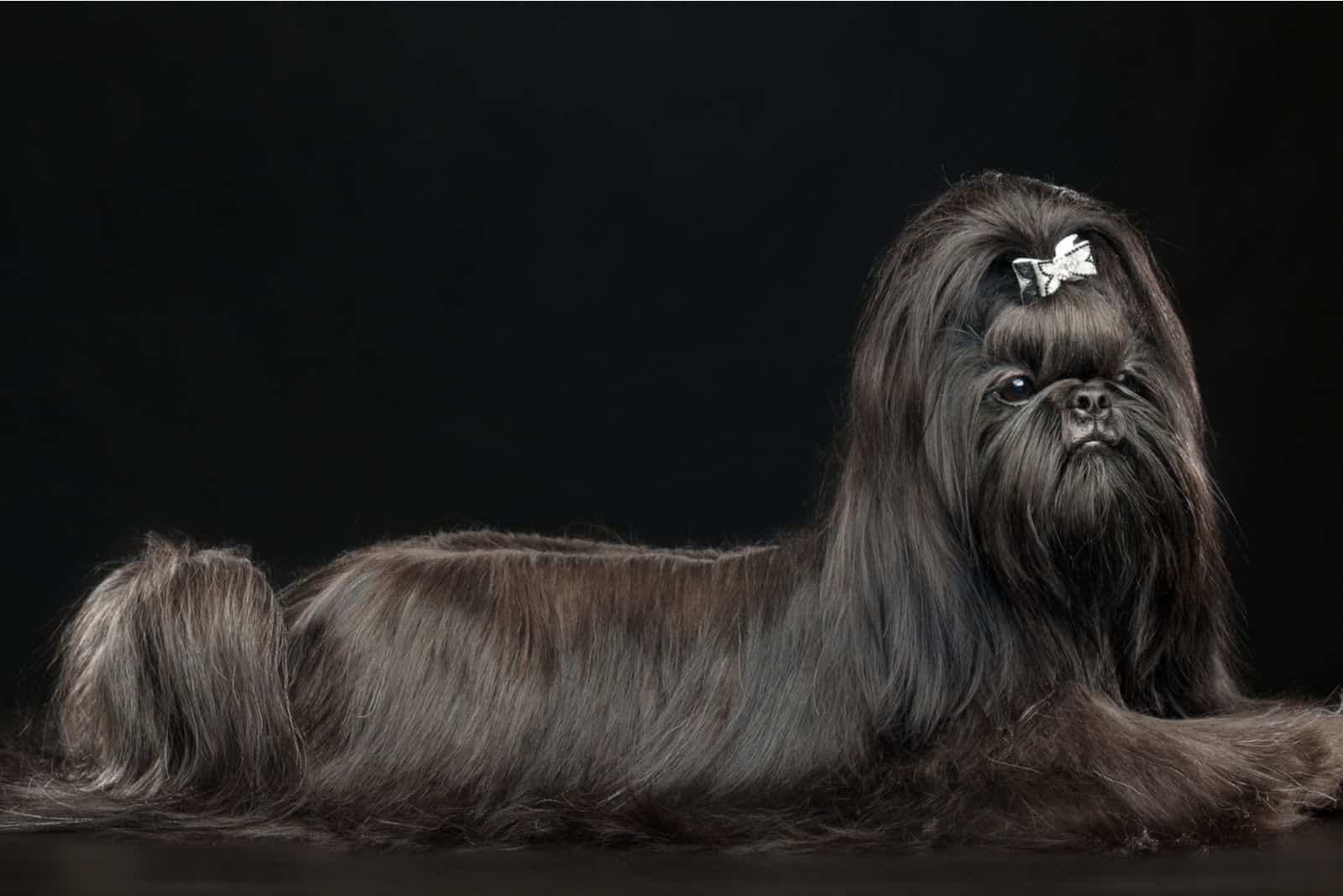
Black is the most dominant color option. True black Shih Tzus have no other hair colors. Even if there’s the slightest trace of another color, such a Shih Tzu will be classified as a two-colored dog.
Also, these black dogs have black noses. There is no black Shih Tzu with a brown nose, and a true black Shih Tzu will have no other hair color.
Even if there is a small trace of another color, the dog will then be considered to have a combination of two colors. All Shih Tzu dogs that have black hair will also have black noses. You will never see a Shih Tzu that is all black with a brown nose.
Black And White Shih Tzu
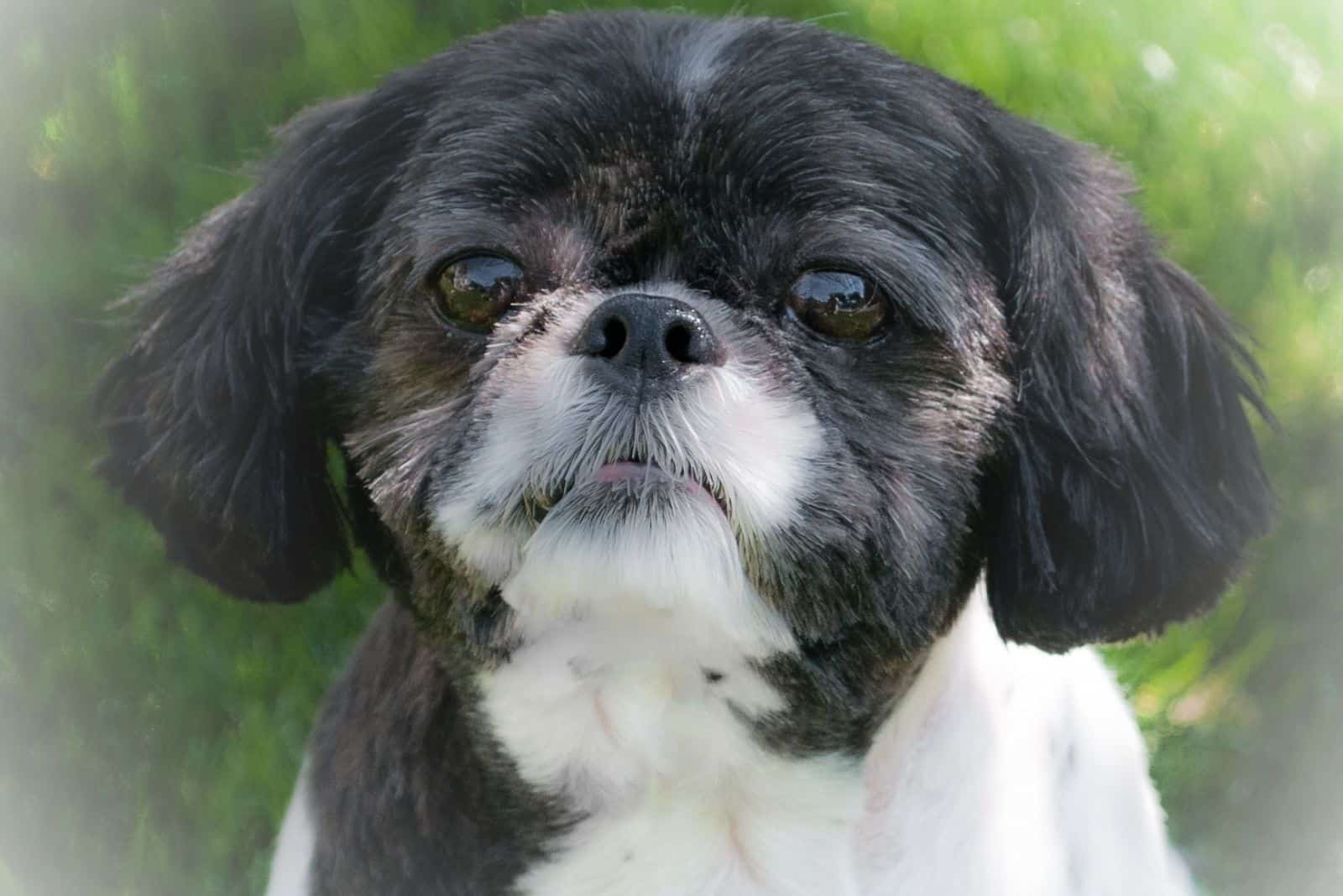
Black and white Shih Tzus are not white dogs with black markings. In fact, they’re black dogs with white markings, even though black appears to be a secondary color.
When the color, white, appears on a black dog, it’s determined by the S locus, or the spotting gene, in all cases but the extreme whites.
The white spotting on the black coat starts as early as in the womb. It starts on certain body parts including the paws, the center of the chest, the tail, and the muzzle. Later, it spreads according to genetic determination.
The last place where the white spreads to is the saddle or the back and the top of the head. This is why it’s rare to see a black and white Shih Tzu with black only on the paws or on the chest.
The spotting continues as the puppy matures. A puppy that once had a familiar black and white pattern might grow into a completely different look. Patches of white will spread all over the body.
In regard to the spreading of that white (see above bullet point), the white will continue to spread over the black while the puppy matures. For this reason, when you have a black and white Shih Tzu puppy, most likely, the patterns that you see will be different once they grow up.
White Shih Tzu: Coat Characteristics
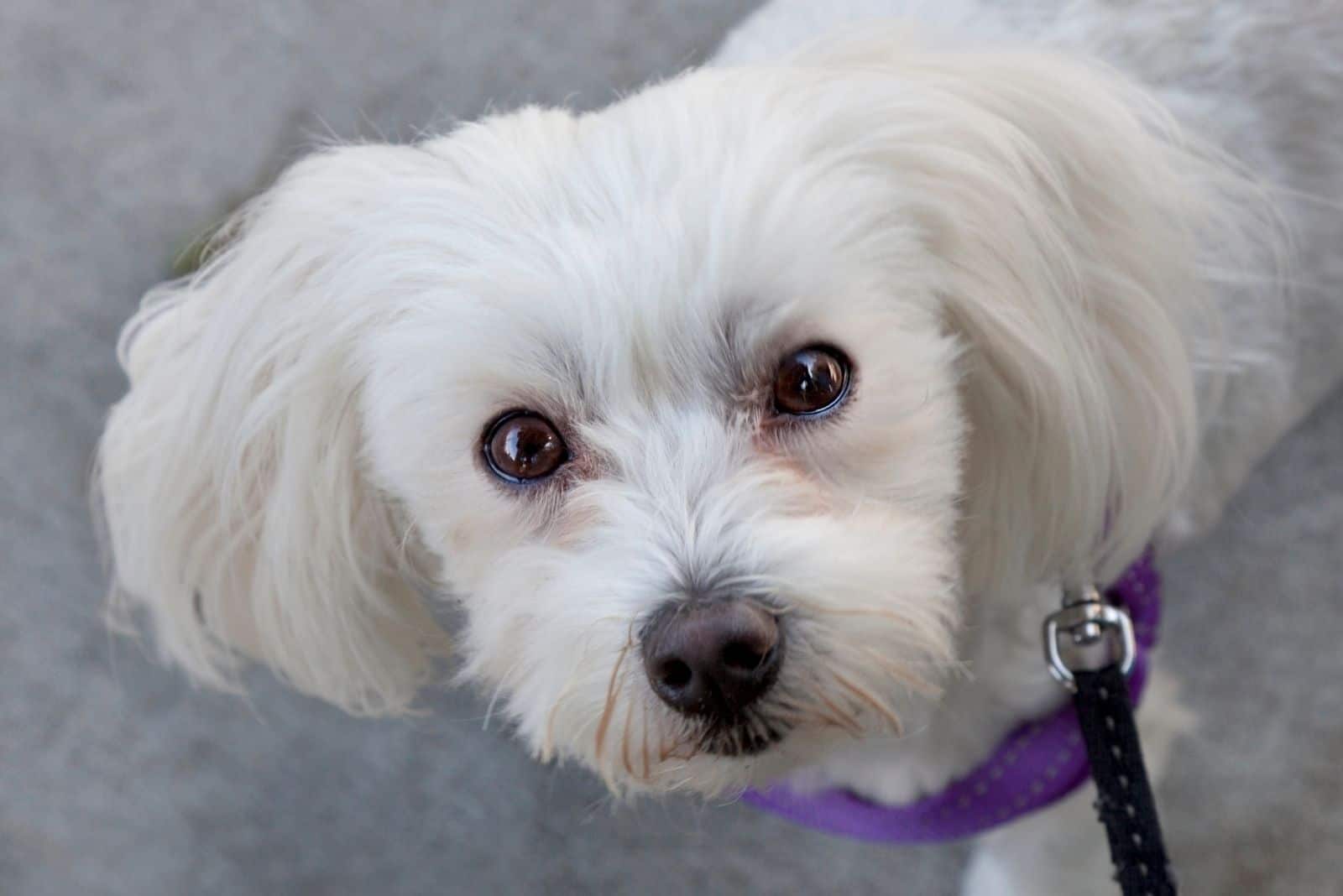
A White Shih Tzu is similar to a black Shih Tzu because it is the other coat color variation without any additional colors in the coat. The nose is always black, except for liver dogs that have a brown nose.
The American Kennel Club is strict with breeders who breed Shih Tzus that aren’t pure white. Such dogs are more cream, but there is no option to describe cream in the official paperwork.
White Shih Tzus are quite rare, just like any other solid color. White is caused by a recessive gene when it comes to fur coloring. A Shih Tzu will be classified as white even if it has white markings on most of its body.
Pure white Shih Tzus are extremely rare. It’s much easier to find a mostly white one. The piebald gene, which is responsible for white markings, is recessive.
In order to get a pure white Shih Tzu, a breeder must breed dogs that are mostly white, and from different families.
Even then, it’s risky. It is quite possible for two pure white Shih Tzus to produce a completely different colored puppy all because of the piebald gene responsible for the white markings.
Most Shih Tzu breeders aren’t even aiming to produce a pure white Shih Tzu. Combine two factors – the unreliability and the lack of demand – and you’ll understand why these Shih Tzus are rare.
Is A White Shih Tzu Puppy Pure White?
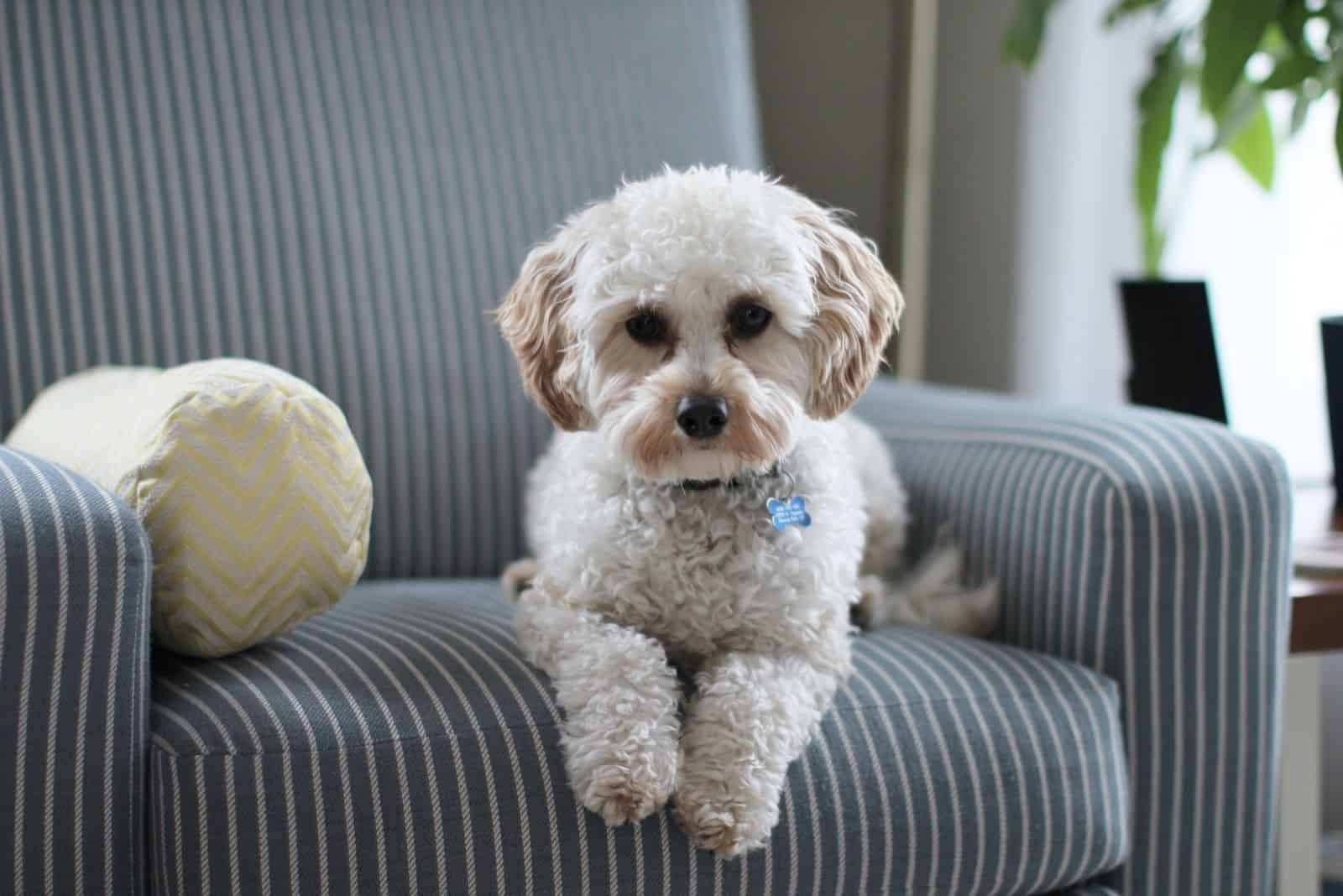
The Shih Tzus that are mostly white have at least one, but usually two other colors in their fur. Those other colors are primary colors (even though they cover most of the body), compared to the secondary color markings which are white.
Most of the secondary colors are red, silver, gold, black, brown, or liver.
It’s not unusual for a White Shih Tzu to have brindle coloring, too. In fact, white and brindle is the most popular color combination for mostly white Shih Tzus.
Brindle is a striping effect you see on many dogs. It can be found on the head and ears, and it highlights the face.
Taking Care Of The White Coat
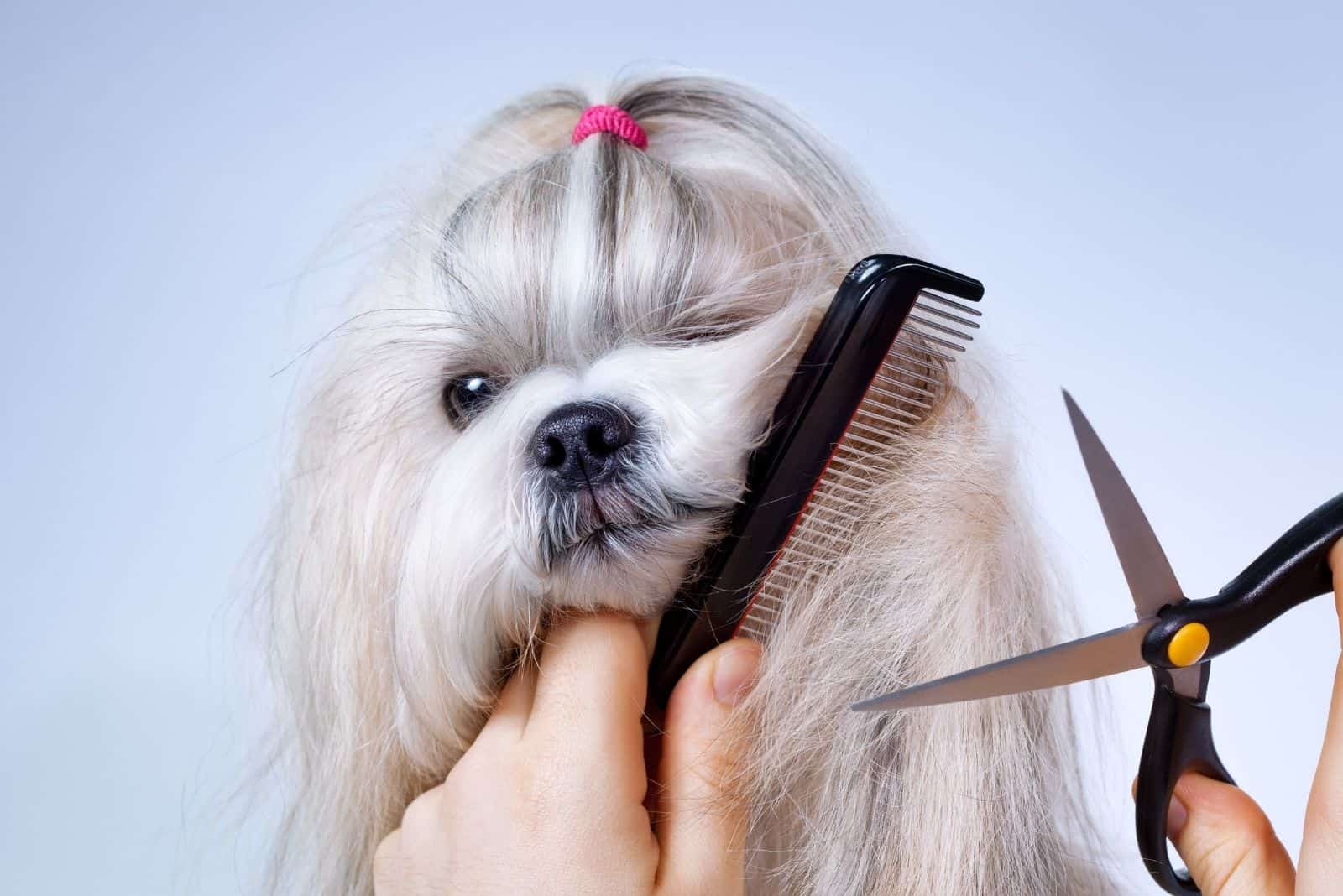
It’s always difficult to take care of white things, especially white dogs. It’s so much easier to see any dirt, stains, or debris on your white dog than it is on any other color.
What it also means is that your Shih Tzu may lose its shine rather quickly unless you take proper care of its fur.
Always choose shampoo carefully. A poor-quality shampoo will dry out the hair and cause the coat to lose its shine.
Also, it will make the hair brittle and difficult to brush out; not to mention how much it could dry out the skin.
Don’t use shampoos with bleaches or harsh chemicals. They do more damage than those with soap and moisturizers.
Harsh chemicals will dry out the coat and cause severe skin irritations.
Reach for the high-quality shampoos that keep the moisture inside the hairs, making the coat shiny and bright.
Every bath session will dehydrate the hair to some point. That’s why it’s so important to keep the baths regular but spread out. There are products that will help you keep this schedule and maintain the look of your white Shih Tzu in-between.
Sprays can be used every day. They provide UV protection and keep the moisture locked in the hairs. Also, they repel dirt and debris and prevent split ends. This is a must-have product for all Shih Tzu owners.
Grooming wipes are very handy. It only takes a few seconds to wipe down your Shih Tzu and remove tiny dirt pieces before they accumulate.
You can use them to clean the paws, too, because they’re the first part of your Shih Tzu that gets dirty so fast.
White Shih Tzu Problem: Tear Stains
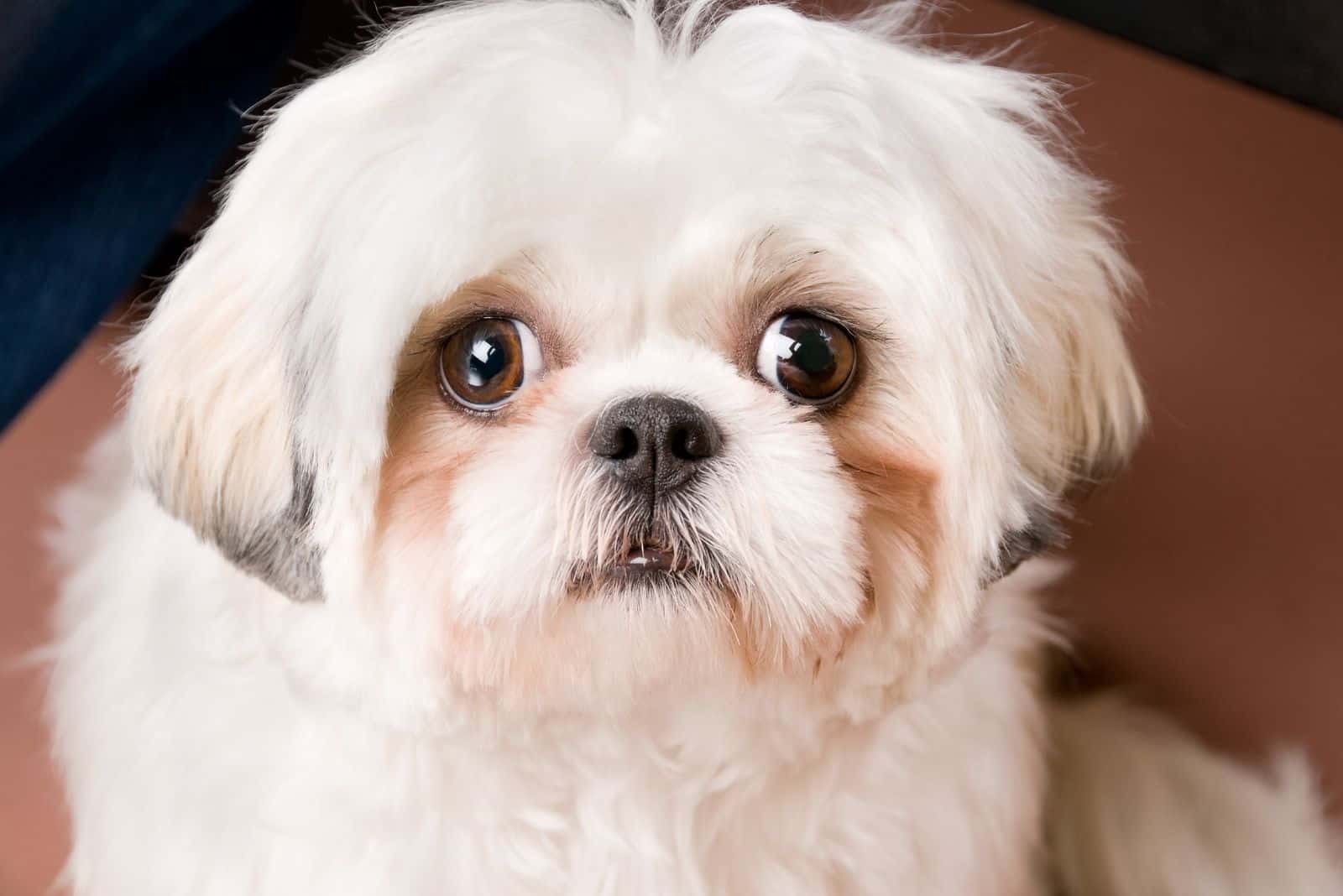
The biggest concern when it comes to a white Shih Tzu is keeping the fur white and clean from the tear stains that form under the eyes. This is a common problem with all Shih Tzus, especially with those that have shallow eye sockets.
There is a special formula to purchase that removes stains from the fur, but make sure you always wipe away tear stains at the first opportunity so they don’t sink into the fur.
Taking care of a white Shih Tzu is more complex and requires more work as compared to other Shih Tzus, but it’s absolutely worth it.
With proper cleaning materials, a set schedule, and your dedication, your Shih Tzu will always be clean, healthy, and shiny.
A silver colored coat looks like a white coat with a deep shine resembling silver. It’s not gray; it’s rather shiny and silky. Silver Shih Tzus will have black lips, pads, eye rims, and nose.
Red is a solid color that looks like a deep, dark orange. This Shih Tzu will have a black nose, eye rims, pads, and lips.
A Gold Shih Tzu has a tan-yellow coat, but the shades vary from light tan to deep gold.
What Is A Brindle Shih Tzu?
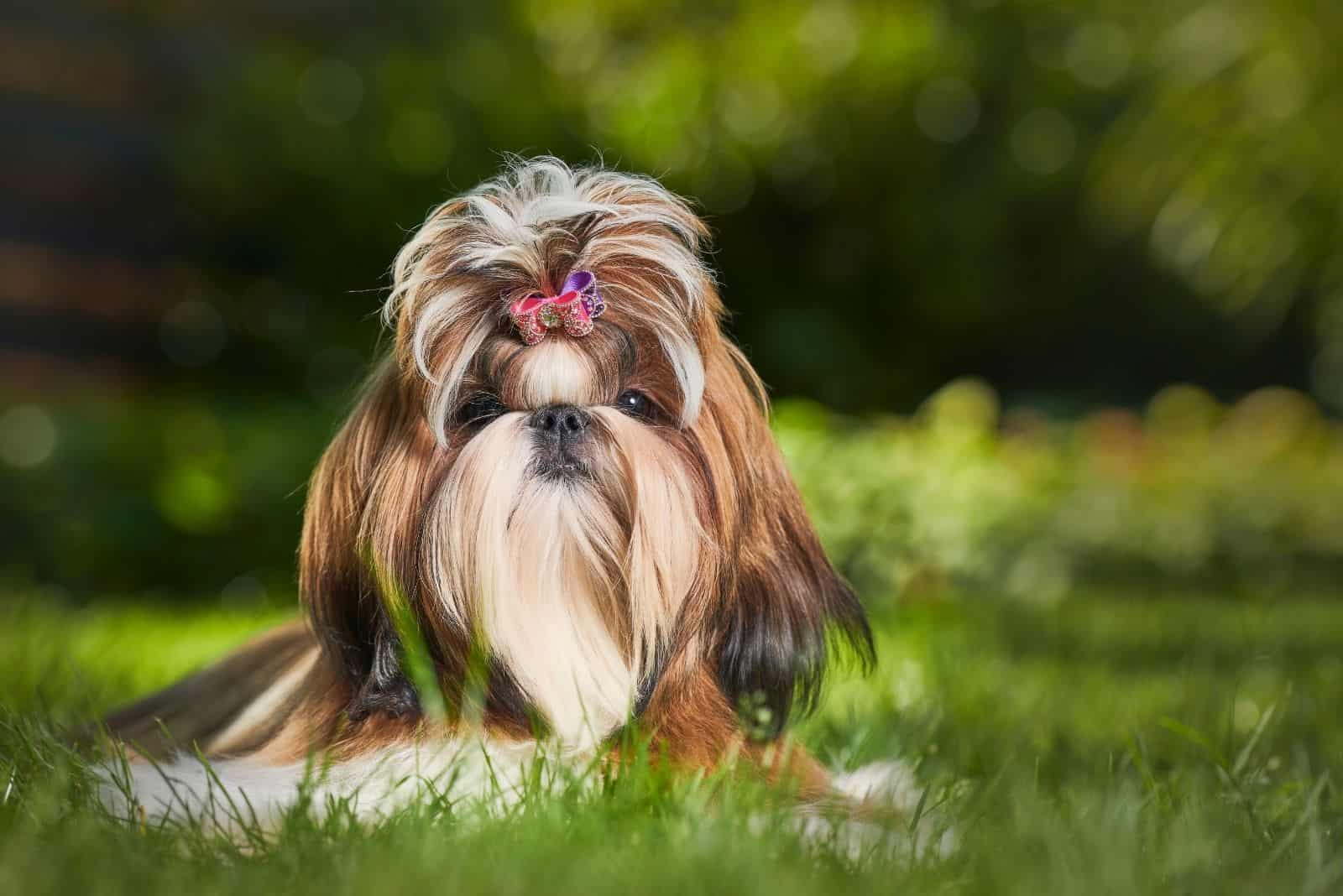
Brindle is a combination of one color and the streaking of another running throughout, i.e., gold-black brindle.
A brindle coat always looks different because some dogs have thicker or wider stripes while others have very narrow stripes.
If the brindling includes the colors liver or blue, then the dog will be considered as a liver or blue Shih Tzu. A true brindle Shih Tzu has black points (black eye rims, mouth, and paw pads).
Some puppies are born with brindle patterning, but that coat coloring may change as the puppy grows up.
Brindling is a complex reaction to several genes found at different loci on the gene.
What Does A Liver Shih Tzu Look Like?
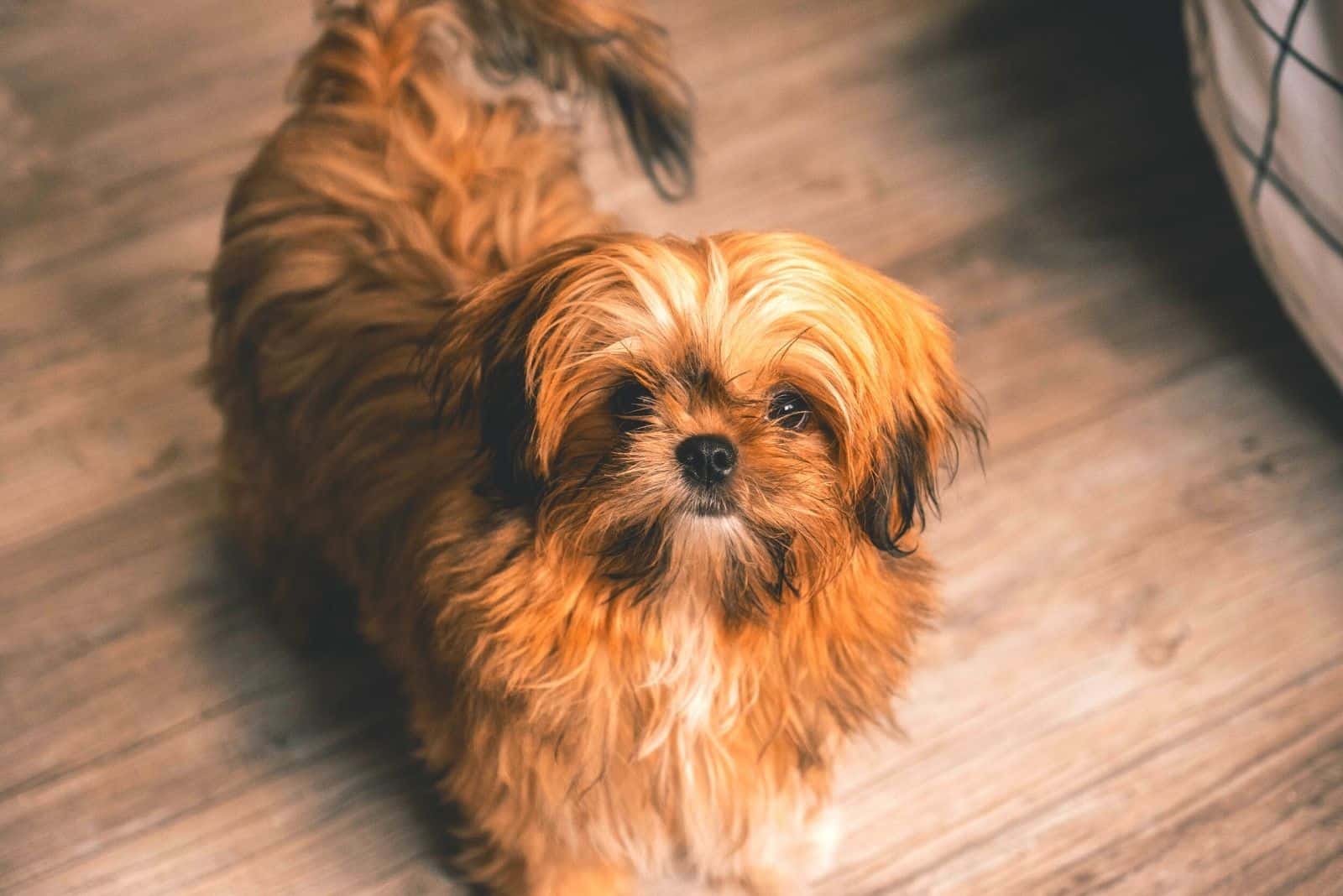
The reason why we call these Shih Tzus liver is due to their brown pigment on the nose, eye rims, and footpads.
Liver is a confusing option because the color affects only the mentioned body parts and not the actual coat color. Only when these points are either brown or liver in color will the dog be classified as liver.
Liver-colored Shih Tzus lack the black pigmentation in the skin. The coat color can vary from very light to deep chocolate, and everything in between.
Liver Shih Tzus can range from light red, orange, and cream shades to deep chocolate. That’s why you can have a white liver, a cream-colored one, a red liver, or a chocolate liver.
The liver coloration comes from a recessive gene, and both parents have to carry it for it to show up in a puppy.
Is A Blue Shih Tzu Really Blue?
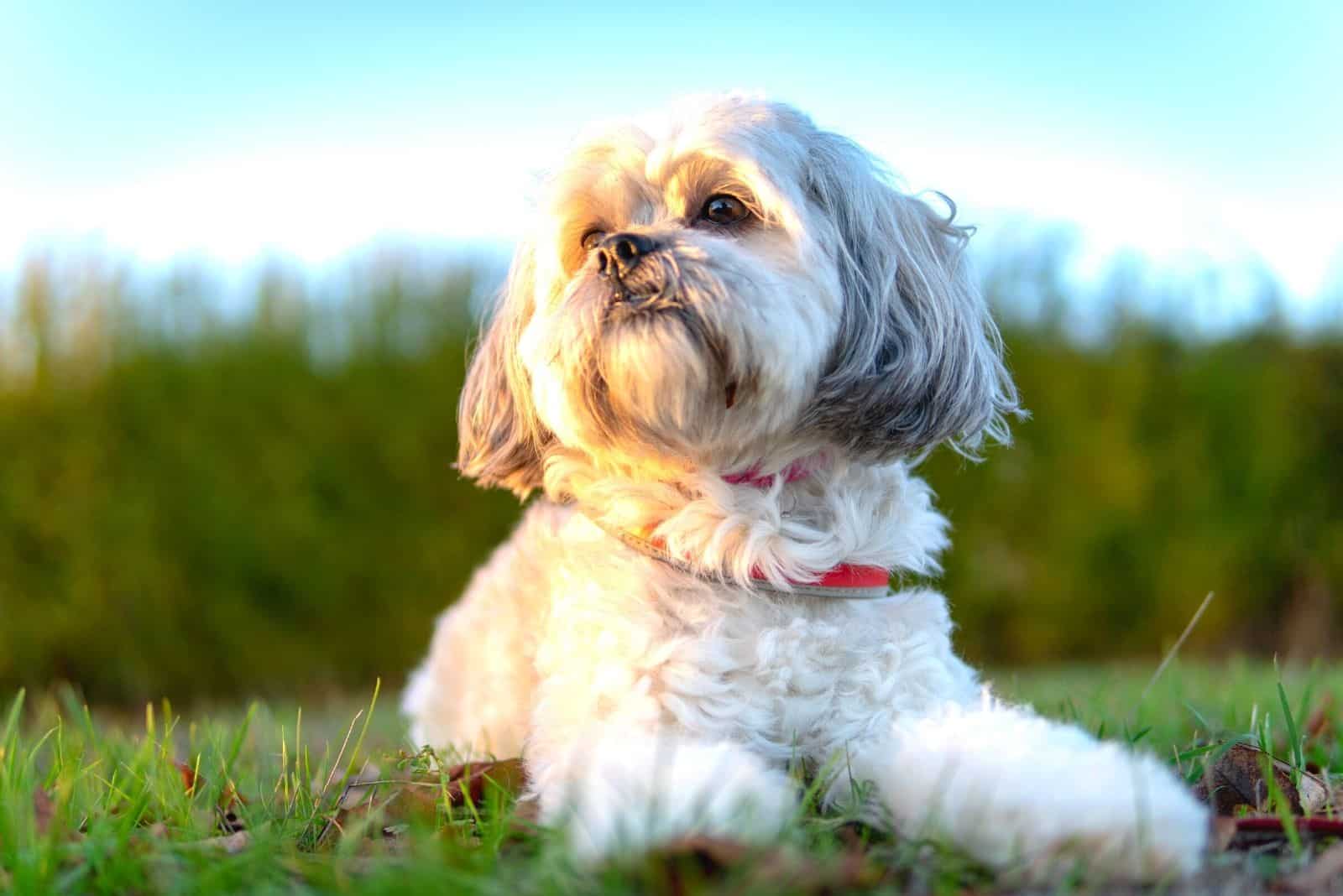
The blue color option is another confusing color for many first-time dog owners. The blue Shih Tzu has a blue nose, but it can have other hair colors. This blue color is more charcoal or diluted black, and it’s difficult to see except in natural light.
If you’re thinking of purchasing a blue-colored Shih Tzu, then you should visit the breeder personally. Don’t rely on photos posted online because you might stumble upon a dishonest breeder.
The blue color is dilute from a genetic point of view. This dilution happens when a black or brown pigment has been affected by an additional dilution gene. When this occurs, the pigment is clumped differently and distributed irregularly.
If the pigment is black, the dilution will result in blue color. If the pigment is brown, the dilution will be a silvery color called isabella or lilac. You will also hear breeders calling this color “lavender“.
However, the AKC doesn’t recognize the Isabella or lavender colors as standard ones.
The dilution gene affects the pigment of the nose, eye rims, and other parts of the body. What it doesn’t affect is the coat color.
Shih Tzu Coat Colors: A Two Color Combination
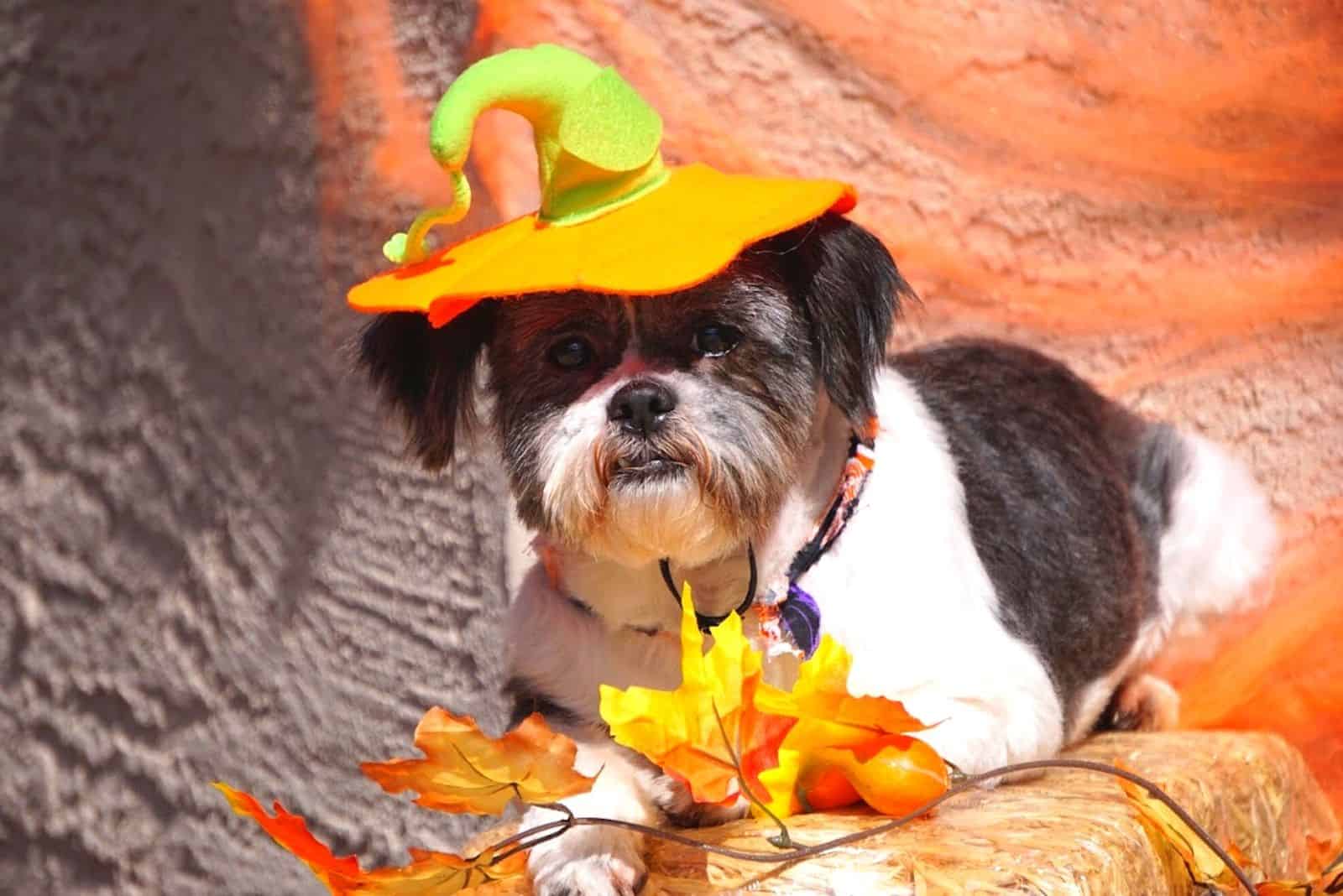
There are seven varieties of a two-color combination, and they all use white combined with another solid color. Those varieties are:
• Black and White
• Blue and White
• Silver and White
• Red and White
• Gold and White
• Brindle and White
• Liver and White
Besides white, another popular color combination of two colors includes red and gold coloration. However, this combination isn’t recognized by the AKC, even though they’re quite popular.
Double-colored dogs can have all sorts of patterns. That’s why it’s impossible to see two Shih Tzus that look the same.
Symmetry in color combinations is very desirable, but it’s not necessary.
Shih Tzu Coat Colors: Three Color Combinations
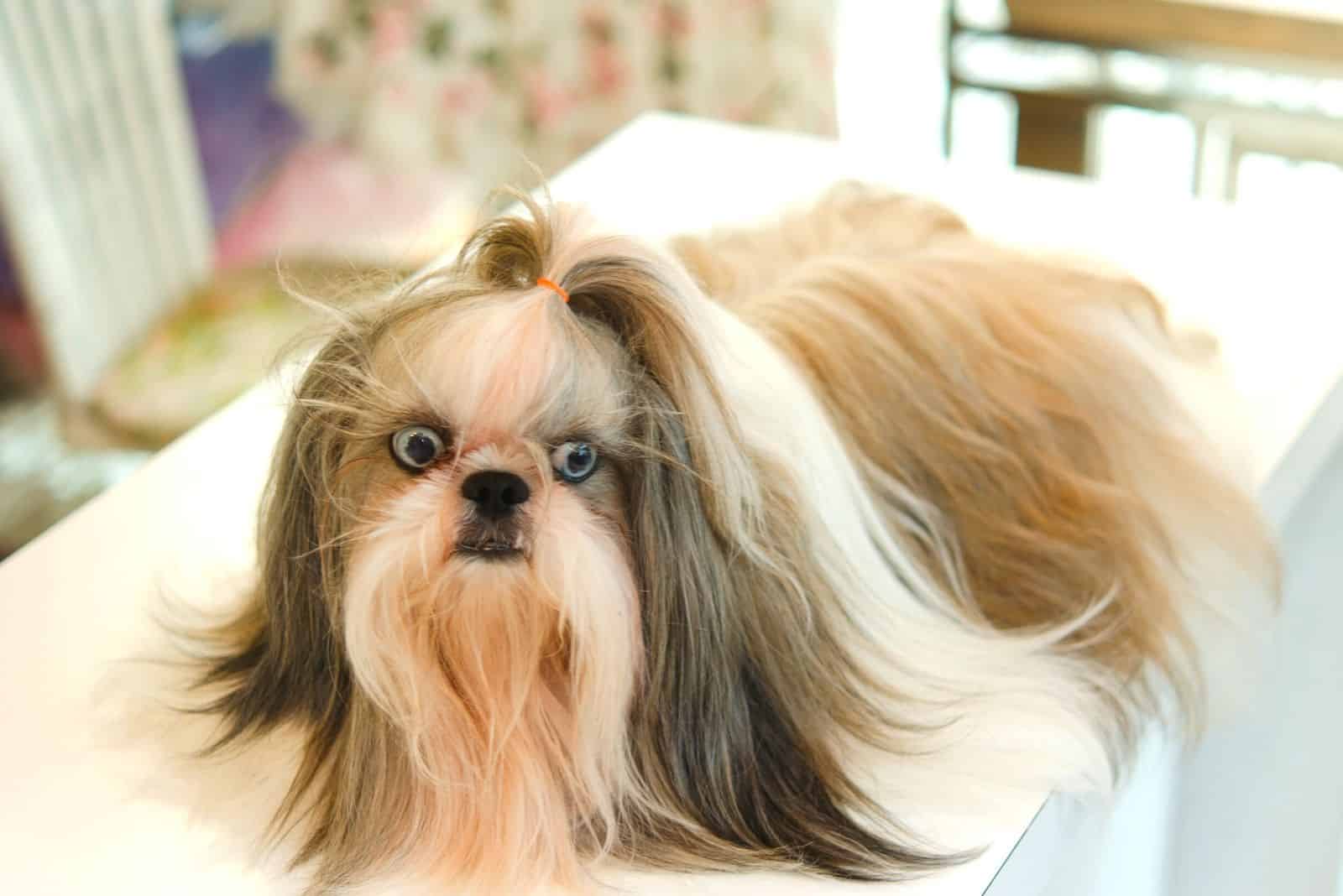
Shih Tzus can also have a combination of three colors. The most common combinations of these are:
• Silver, gold, and white
• Silver, black, and white
• Black, gold, and white
• Black, silver, and gold
Shih Tzu Coat: Unique Markings
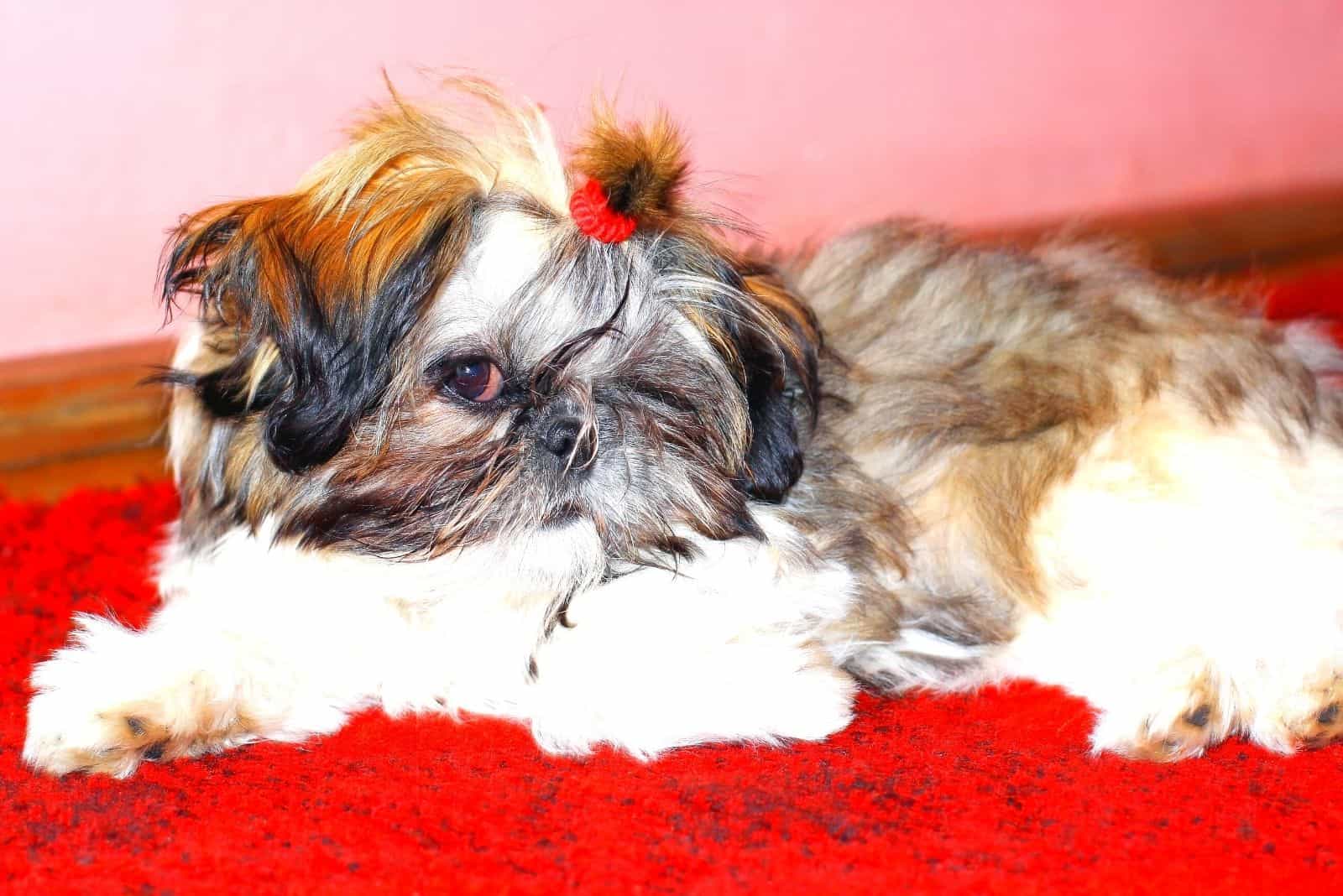
In addition to having many Shih Tzu colors, there are lots of combinations and markings that may occur. Some of the most common as well as the rarest of them all are listed down below.
Black Mask
Sometimes, Shih Tzus will have a black coloring of hair on its muzzle, which may extend towards its eyes, ears, and even its forehead.
This is called a black mask, and the rest of the body can be any other solid color like gold or red.
Dobie Markings
Dobie markings are very rare colored markings. They occur when a puppy is born with tan markings on a black or a dark coat. Tan markings can be found above the eyes, on the jowls, on the lower legs, and under the tail.
Breeders breeding such puppies will always sell them as premium Shih Tzus. The reason why they call this dobie markings is because they resemble the coloration of the Doberman Pinscher dog breed.
The markings come from recessive genes, meaning that both parents must be carriers of the genes. However, not all puppies in the litter will have these markings.
Black Tips
Another interesting marking is black tips. When a puppy is born, the coat is usually a solid color like red or gold, with black tips at the end of the hair shaft.
This marking is present all over the body, and it shouldn’t be confused with the black color that some Shih Tzu dogs have on their ears.
The black tipping will, unfortunately, disappear after the dog’s first cut, so enjoy it while the dog is still young or untrimmed.
What Happens To The Shih Tzu Coat Colors Over Time?
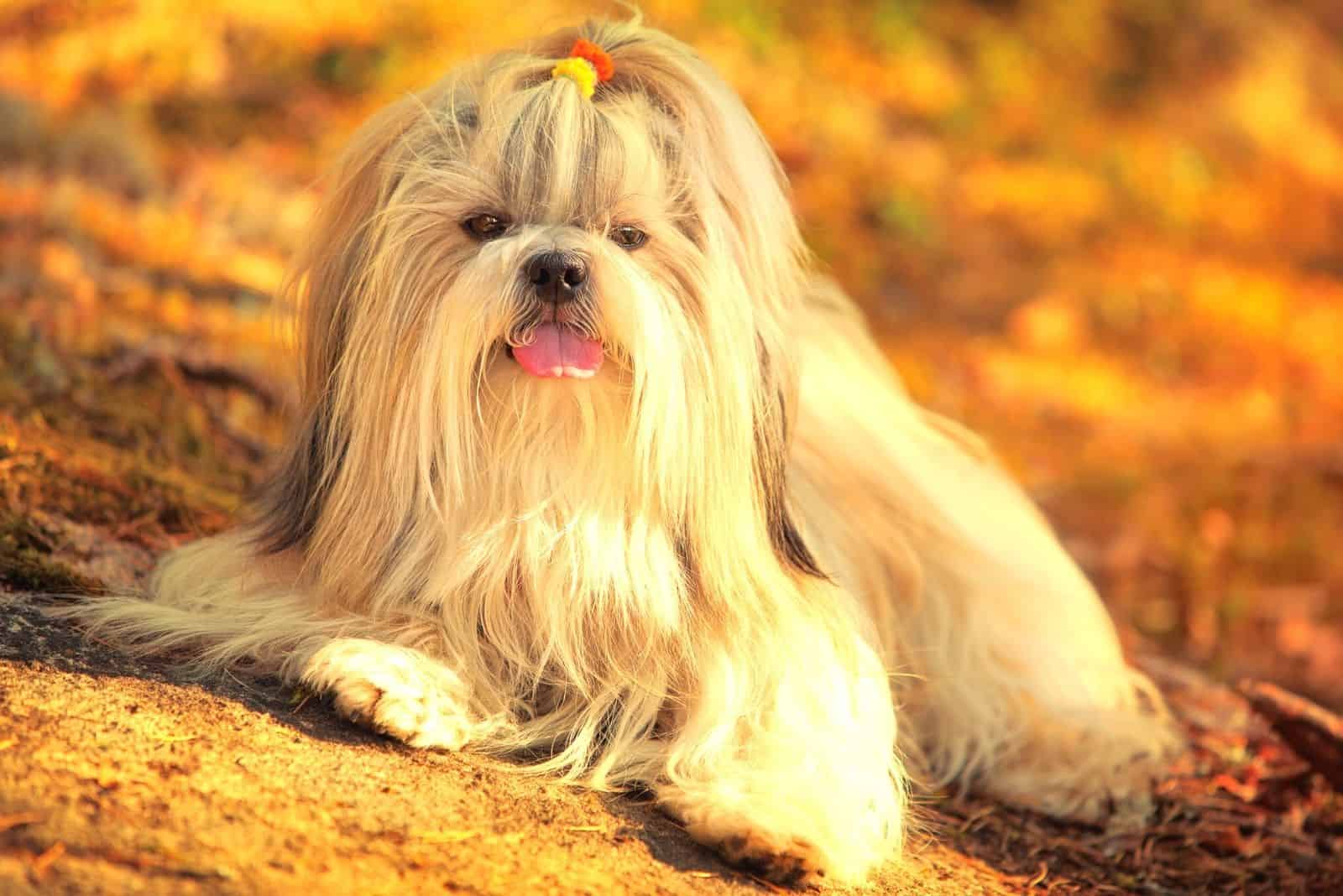
A phenomenon that is characteristic of Shih Tzu coat colors is their tendency to change color over time. Some of them become lighter, or in other words, their color fades, while others turn gray.
It’s not an unusual case to see a color marked on the AKC certificate for a puppy of 8 weeks that is completely different from the adult coat color.
The colors you liked at first may be quite different from what your puppy will look like once it grows up.
The reason behind these color changes is the genes that the dog carries. Two distinct genes will determine whether a Shih Tzu will have a lighter coat or if it will become gray over time.
Shih Tzu Puppy: When The Genetic Factors Mess With The Coat
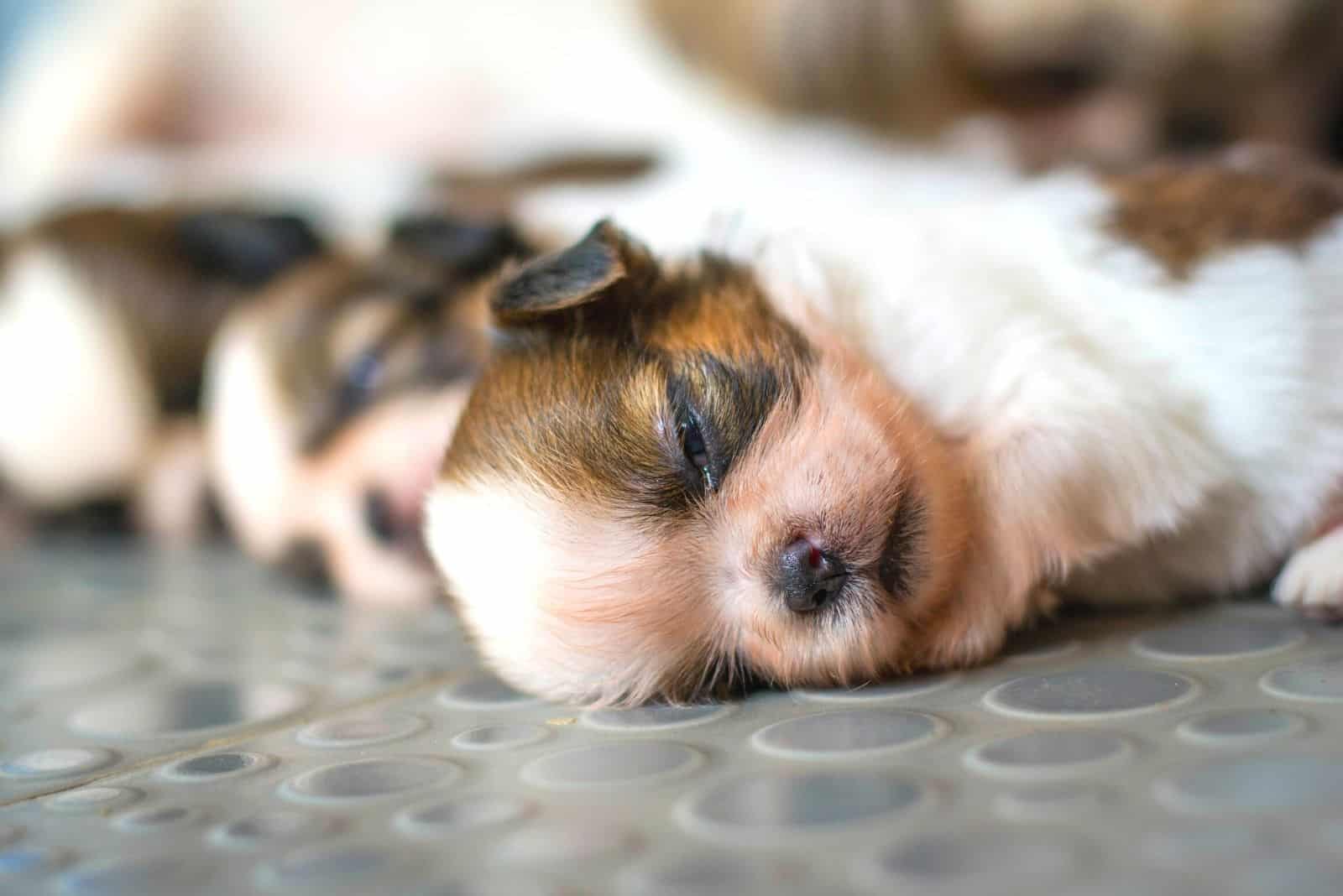
Fading is one of the natural processes that Shih Tzus are prone to. If a Shih Tzu carries the G gene, the coat will fade as it becomes older. Also, you will notice fading in even one-month-old puppies.
Sometimes, Shih Tzu puppies look all black at birth, but their coat will fade as soon as they become old enough for solid dog food. The fading process will continue until the puppy turns one.
Graying is another natural process. When a dog carries the Chinchilla gene (CH series), it is more likely to change colors, too, but not in the same way as fading. The dog’s coat will turn a rich silver color. He’s not aging too quickly, he’s just changing colors.
More Interesting Shih Tzu Coat Colors and Patterns
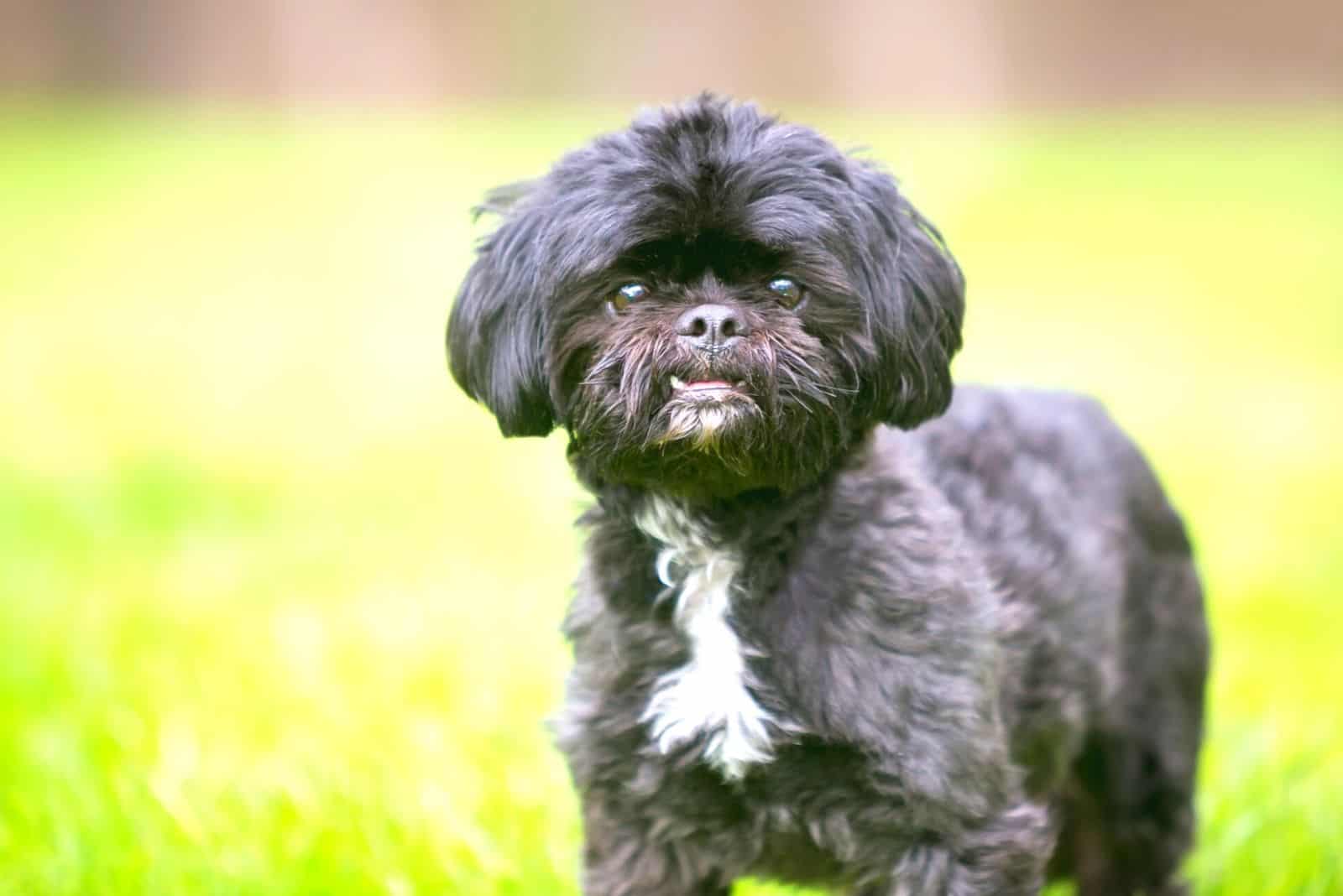
There are numerous Shih Tzu coat colors and patterns you can find on the market. The most interesting markings are:
• Blaze – a strip of white hair right between the eyes
• Flare – when the blaze widens as it approaches the top of the skull
• Collar or shawl – a marking around the neck, usually in white
• Saddle – a large white patch of hair over the back where a saddle would go
• Tuxedo – a slight patch of hair on the chest of a solid-colored dog. The color is also on the chin and on the feet, resembling a tuxedo
Choosing A Shih Tzu Coat Color
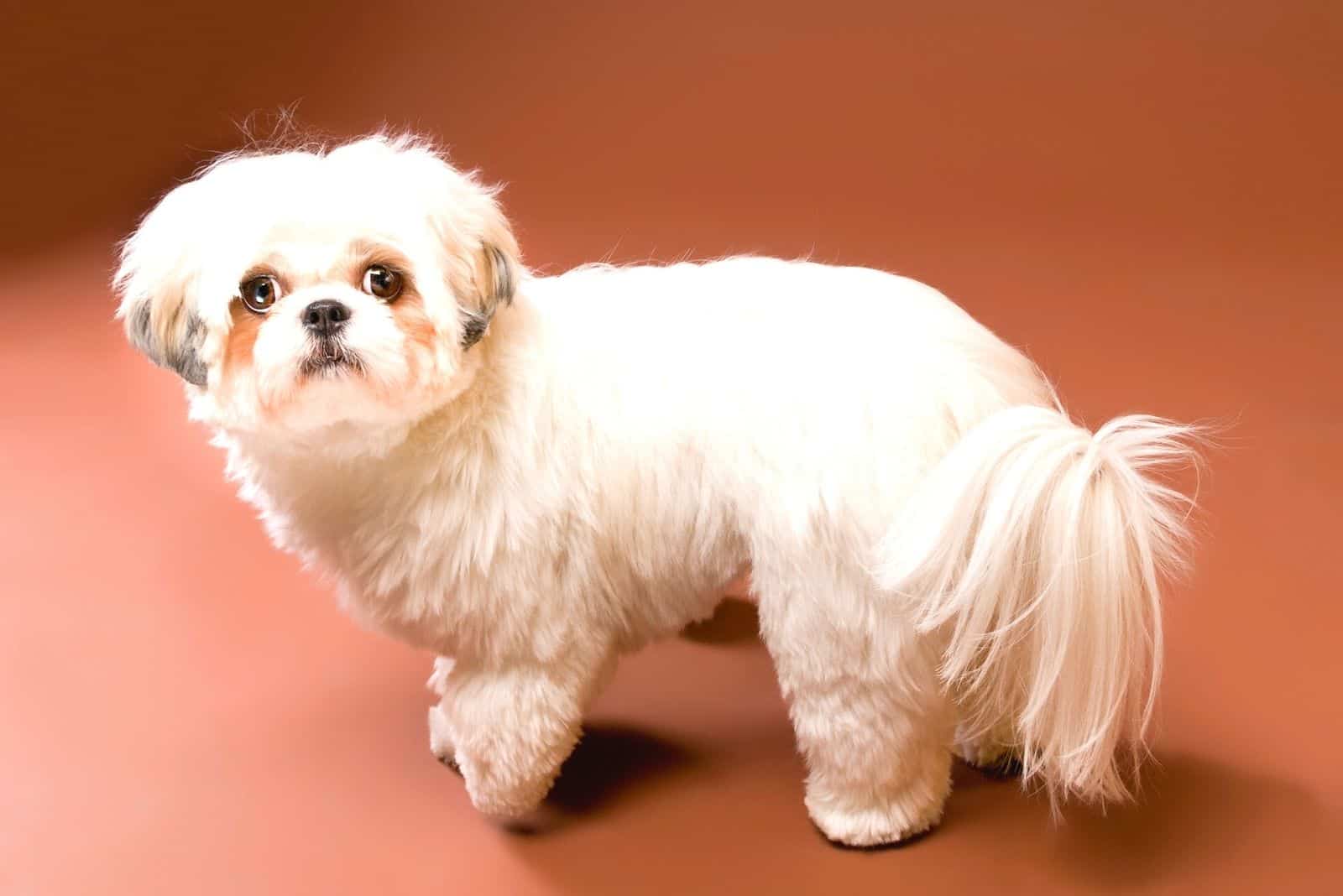
So, how do you choose between so many stunning Shih Tzu colors? The decision depends only on your personal preferences.
If you pick a white Shih Tzu dog, you have to face the fact that your dog will need more bathing and grooming. Also, a white coloration on the face, around the muzzle, or under the eyes can stain easily, and will require frequent bathing.
In addition, Shih Tzus with white under their eyes can be stained from their tears. You will need to use products that eliminate tear stains all the time.
What is trending now is chocolate Shih Tzus. But still, all Shih Tzus are beautiful. It’s their personality that shines through any coat color.
Read Next: Top 5 White German Shepherd Breeders In The U.S. (2022)
